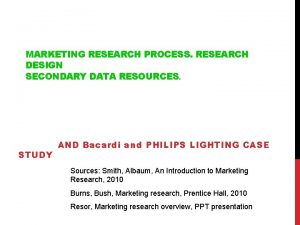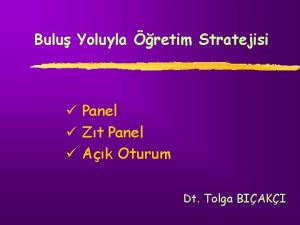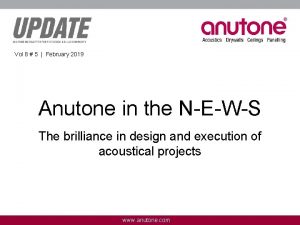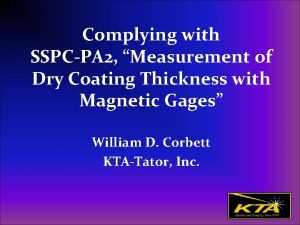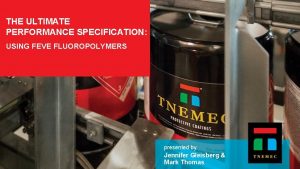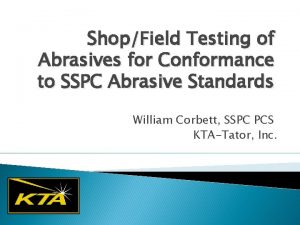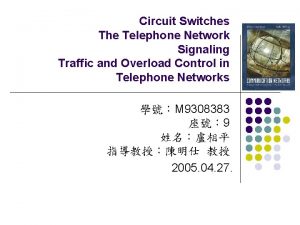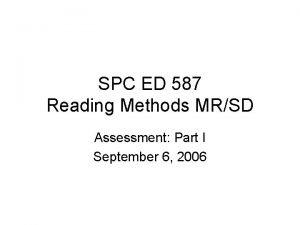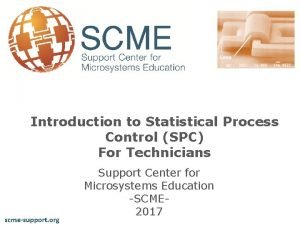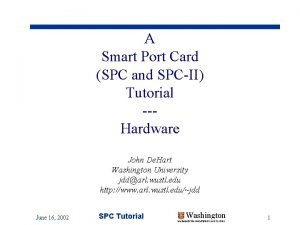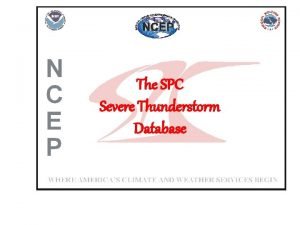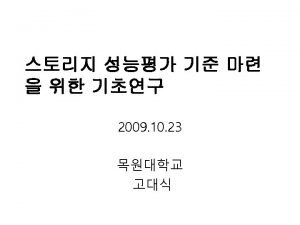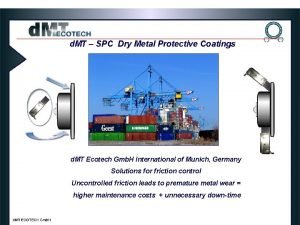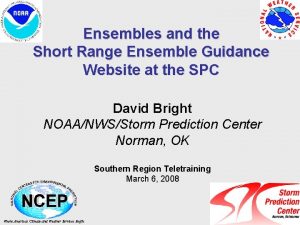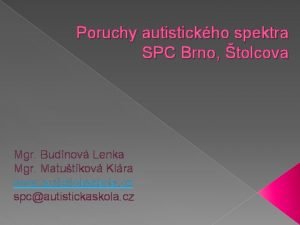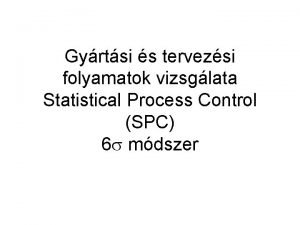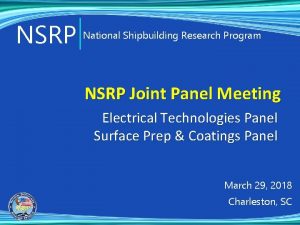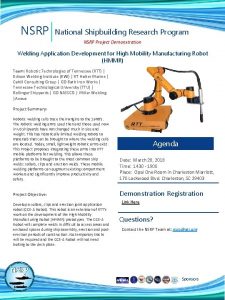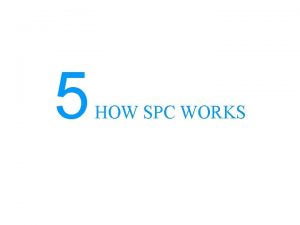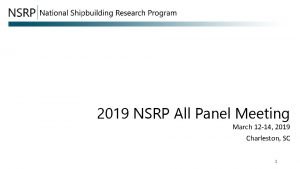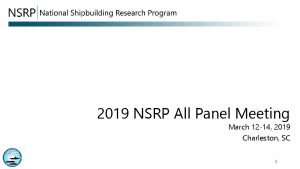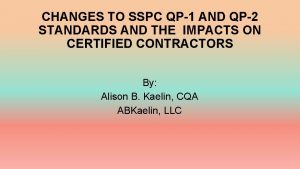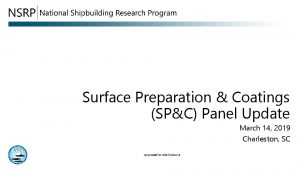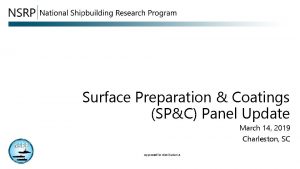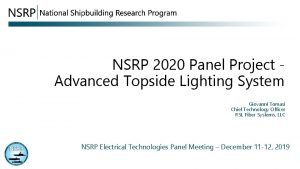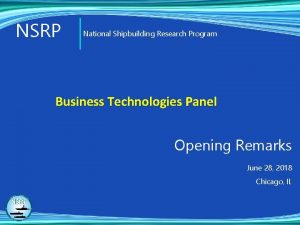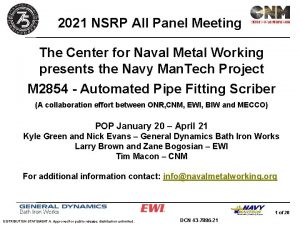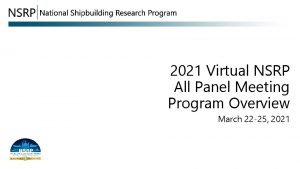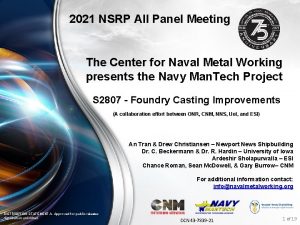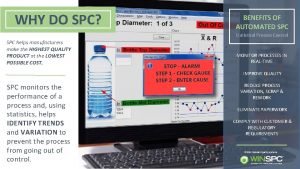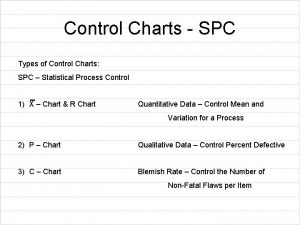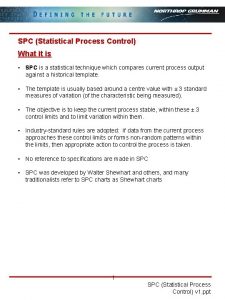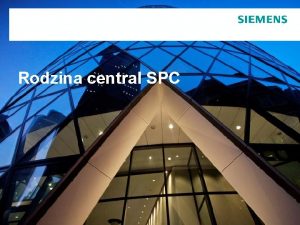SSPC Standards Update March 2019 NSRP SPC Panel





















- Slides: 21

SSPC Standards Update March 2019 NSRP SP&C Panel, March 12 -14 2019 Charleston, SC John Kern SSPC Technical Services Dept.

Topics • Ongoing Revision Projects 2019 Update – SSPC-SP 11, Power Tool Cleaning to Bare Metal; and SSPC-SP 15, Commercial Grade Power Tool Cleaning – SSPC-PA 17, Procedure for Determining Conformance to Steel Profile/Surface/Roughness/Peak Count Requirements – Proposed revisions to SSPC/NACE Joint Dry Blast Cleaning Standards – QP 2 Standard Revision (QP 1 revision is complete)

Topics (cont’d. ) • New Projects – Standard for Thorough Blast Cleaning of Non-Ferrous Metals – Possible standard for surface cleanliness using non-profiling surface preparation techniques (plasma blast, laser ablation, possibly dry ice) that do not generate secondary waste stream

2019 Revisions – SP 11 and 15 • No significant change in cleanliness requirements • Proposed table for selection of tool types for various uses, e. g. – Rust removal – Removal of single coating layer – Removal of all coating layers – Creation of anchor profile – Feathering edges

Proposed Revisions SP 11 and 15 • Addition of a tool selection table is proposed • Table will describe various existing conditions and the appropriate tools to use for best results on each condition • Tentative plans for demo of various tool capabilities at SSPC 2020 conference • Proposal for new cleanliness standard submitted by Monti. Power, but needs more “grassroots support” from users and contractors to be developed as a separate standard

Power Tool Selection Table • Still a “work in progress” • Types of tools (still in discussion) include – Grinding wheels – Coated abrasive discs/belts/flaps – Nonwoven abrasive flap – Nonmetallic brush – Metallic brush – Rotary flapper – Cutter bundle – Bristle impact – Needle gun

SP 11 on Ship Deck

Revision PA 17 (Compliance to Profile Requirements) • New appendix that describes techniques for measuring profile on severely pitted substrates – Take readings on non-pitted area of substrate if available – Create companion coupon of non-pitted steel to evaluate profile created by the abrasive • Definitions are being revised to reflect revisions in ASTM D 4417 - waiting for publication of revised D 4417 before continuing work

Heavily Pitted Steel

2019 Revision of SSPC-PA 2 • Revision issued January 2019 • Added nonmandatory appendix describing use of scanning probe technology to acquire readings

Scanning Probe

PA 2 Appendix 10 Highlights • Scanning Batch Measurement – mean of no fewer than 12 and up to 24 DFT readings w/o lifting probe from coated surface – Readings taken within 645 m 2 (~100 in 2) segment of coated area • Scanning Area Measurement – sample mean of 5 scanning batch measurements obtained over each 10 m 2 (~100 ft 2)

Large box represents 100 ft 2 area (scanning area) Smaller boxes represent 100 in 2 areas (scanning batch)

Revisions to Joint Dry Blast Standards • First ballot issued mid-February 2019, responses due March 24 • Committees voting on “template” language revisions that affect all five dry blast standards • SSPC-SP 10/NACE No. 2 has been chosen to provide the “template” • Most changes proposed to reflect parallel language in joint WAB standards issued in 2018

Revisions to Dry Blast Standards • Propose to add – Info on removal of pack, stratified, rust scale as in 2018 revisions of SP 2 and SP 3 (include instructions for methods and extent of removal in project spec) – Nonmandatory commentary sections on nonvisible contaminants, definition of staining, example of specification statement • No plan to change the existing cleanliness definitions


Standard for Thorough Blast Cleaning of Non. Ferrous Metals • Cleaning of previously coated non-ferrous alloys (copper, aluminum), stainless steel for subsequent coating application • Organization similar to dry blast cleaning standards for steel • Non-mandatory appendices contain supplementary info on selection of abrasives, blast pressures, chemical cleaning, profile, etc. • Draft has had one ballot, discussion of use of “staining” vs. ”color variation” is ongoing. • Pete Ault may provide additional details

Possible Non-Profiling SP Standard • Might include use of laser ablation, dry plasma blasting, and possibly dry ice blasting? ? • Proposal requires SSPC Standards Review Committee approval after scope and methods are more defined – needs industry cooperation from all technologies • Matt Binsfield will provide update on status

QP 1 2019 Revision • • Revised standard issued January 7, 2019 Audit Checklist not yet updated to reflect revisions No audits to the 2019 requirements are planned until 2020 Clarifications to subcontracting requirements and requirements for EH&S manager training and education are the principal changes

QP 2 Revision • Still in consensus committee review • Ballot of Draft #3 expected in April • Subcontracting and EH&S revisions will parallel those in revised QP 1 • Revisions to Audit Checklist will start after standard is approved and require approval by PCCP Advisory Committee

Questions? THANK YOU!
 Poland national anthem lyrics
Poland national anthem lyrics Alternative of log based recovery
Alternative of log based recovery Continuous panel vs discontinuous panel
Continuous panel vs discontinuous panel Zıt panel nedir
Zıt panel nedir Grihalakshmi magazine march 2019
Grihalakshmi magazine march 2019 Game data crunch
Game data crunch Sspc qp 1 contractor list
Sspc qp 1 contractor list Sspc-pa 2 latest edition
Sspc-pa 2 latest edition Sspc-sp-11
Sspc-sp-11 Astm d 7393
Astm d 7393 6 priority areas of national core standards
6 priority areas of national core standards Hard customer defined standards
Hard customer defined standards Spc switching system overload control
Spc switching system overload control Spc 587
Spc 587 Sandia
Sandia Spc tutorial
Spc tutorial Spc database
Spc database Spc specification
Spc specification Spc sheet metal
Spc sheet metal Spc sref
Spc sref Spc brno
Spc brno Spc control chart
Spc control chart


